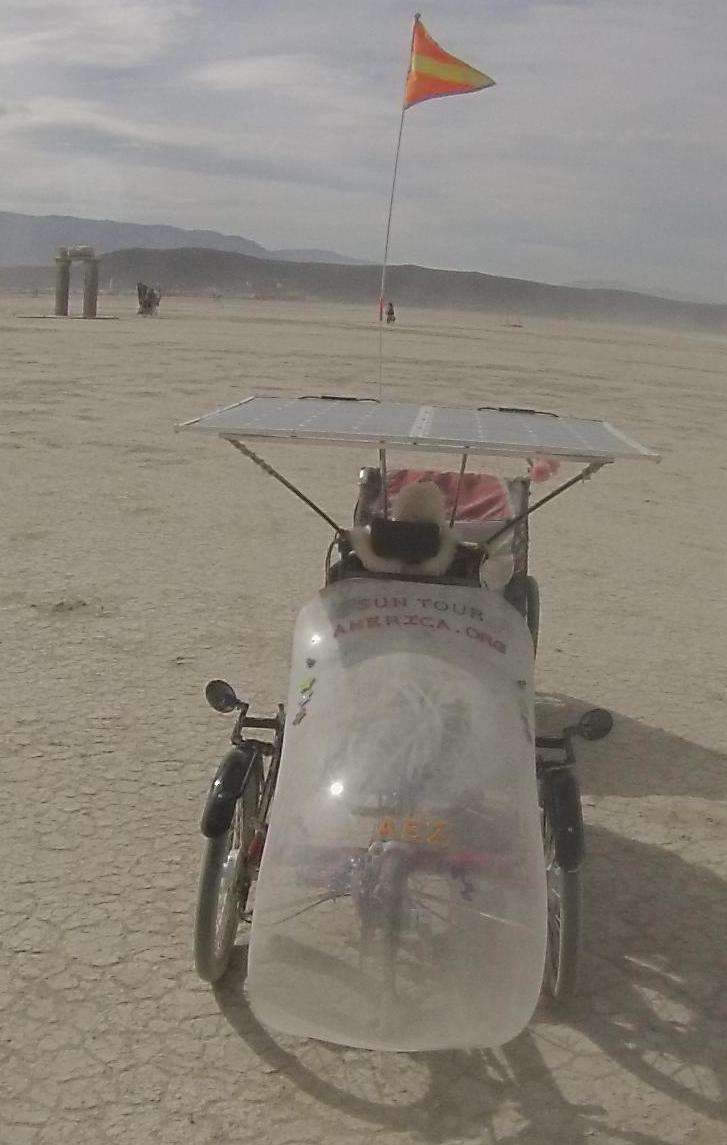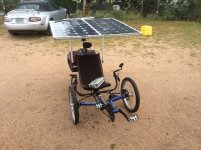miro13car said:
icerider
thank you for post
It must be exciting to see this battery charged from just being in the sun,
what a wonderful rolling proof that the biggest source of energy on this planet /solar/ can be put to use with success.
Also, notice price of panels goes down while efficiency up with every year passing.
Yes, the next few years is going to be interesting.
The utilities are getting worried and looking for new "fees" for grid tied solar systems. SOME of that is fair. Grid tied systems do use the grid at night and with net metering, the utility is basically forced to buy the excess power produced by the panels during the day at the "retail" rate. It will be interesting to see which utilities manage to figure this one out and make peace with their solar-enabled customers and which utilities manage to make their solar-enabled customers "cut the wire". The cable folks are already learning that we can do without their dubious services, subscriber numbers are down across the board for every cable system and those idiots just keep raising their prices to make up the difference. That way lies bankruptcy.
There are a lot of morons in the business world who have been taught to think that their stockholders come first. CUSTOMERS come first. Without them there IS no company and there ARE no stockholders. History is littered with the lifeless bodies of companies that forgot that simple rule, and you can use their stock certificates for wall paper or kindling. This is a particularly hard lesson for utility-like companies to learn. They are so used to the "we don't care, we don't have to, we're the phone company" approach that they learn ONLY from financial pain.
If you are doing a good job and delighting your customers with products that they want or need and see as high value, profits and growth will follow. If your business plan is to charge ever higher prices for products your customers can elect to do without you are going to discover what the phrase "elastic demand" means. Discover that unpleasant fact in an environment where you are stuck with high fixed operating costs and your company is dead meat. The utilities are in EXACTLY that environment right NOW. Solar is getting cheaper by the minute and for those of us luck enough to have the room, solar makes more and more sense (with the current rules). Once I have the solar capacity, the only value of the grid is its "storage" capability. Net metering under-values that "storage" capability. Net metering is a safe approach only so long as additional solar generation allows the utilities to avoid building additional peak generating and transmission capacity. The utility saves money and the solar-enabled customer saves money and the system goes on working. But when solar gets cheap enough that a bigger fraction of the customers begin to go solar, the utility begins to idle generating capacity. At that point, the utility is not saving that much money since they still own the idle generating capacity and are still paying the loan they took out to build it. Their operating costs don't drop much but they lose customers. NOW the utility begins to have to charge for the grid's "storage" capability, and hence the "solar fees".
When this happens, the solar-enabled customer has a bill to look at and evaluate against the cost of owning their own storage or night-time generating capability. One of my solar-enabled neighbors has already "cut the wire" and I can hear his generator running at night -- every night. Now, take this environment and drop a cheap storage solution into it and the utilities get HURT. That cheap storage solution does not exist yet, but the EV market is driving a LOT of related research and manufacturing capability which in turn creates economies of scale, reducing the cost of storage capacity. If I didn't work, had an Electric car and a smaller and better insulated house, I would be asking myself the following question: "Can I reduce my late afternoon and night-time electric usage to the point that I can solar generate during the day storing the midday excess in my car battery, run my errands in the morning or early afternoon and then run off the electric car battery at night?" I think the answer right now is either no, or that the wear-and-tear on the car battery would require early replacement and cost enough that it is uneconomical... ask again in 5 years.
If the topic of solar and the utility companies is of interest to you, you might try the links below as a starter. They are easy Google results.
I have read them all, but have not made any serious attempt to provide a "spectrum of opinions". The utility position that net metering results in non solar users subsidizing solar users is at least partially true. The question is how we will address that issue.
http://www.bloomberg.com/news/2013-11-15/arizona-regulators-impose-power-grid-fees-for-solar-roofs.html
http://thinkprogress.org/climate/2014/09/14/3567244/utility-fees-end-wisconsin-solar/
http://www.bloomberg.com/news/2012-12-17/california-utilities-say-solar-raises-costs-for-non-users.html
http://www.weather.com/news/science/environment/oklahoma-alternative-energy-taxes-20140423
http://www.bloomberg.com/news/2013-12-26/utilities-feeling-rooftop-solar-heat-start-fighting-back.html










